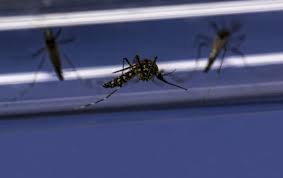As dengue fever cases surge globally, researchers are emphasizing an often overlooked yet effective preventive measure: trash cleanup. In a study released on January 13 by Stanford researchers and international collaborators, cleaning up trash emerged as a critical action to reduce the risk of dengue transmission, particularly in vulnerable regions.
Dengue, a viral illness transmitted by mosquitoes, causes high fever, severe body aches, and can lead to hemorrhagic fever or death in some cases. Its spread has intensified, largely due to climate change, as the disease moves beyond traditional tropical areas into new regions. Global cases doubled between 2023 and 2024, and in the United States, the virus spread to several states in an “unprecedented” manner.
Stanford researchers, collaborating with experts from Fiji and Indonesia, explored the impact of environmental factors on dengue transmission in children under five, a particularly vulnerable group. Their study, published in BMC Infectious Diseases, found that households with regular trash removal had significantly lower rates of dengue infection compared to those where waste accumulated.
Joelle Rosser, assistant professor of medicine at Stanford and lead author of the study, emphasized the connection between trash and mosquito breeding grounds. Many types of waste collect in shallow water, which serves as a breeding site for the Aedes aegypti mosquito, the primary vector of dengue. Previous studies have confirmed this link in other regions like Kenya, suggesting a global relevance for trash management in controlling mosquito-borne diseases.
“Trash disposal can have a real impact on dengue risk,” Rosser said. “This highlights an important area where we have an opportunity to intervene and improve the health of humans and their environment.”
The study was conducted in 24 informal settlements in Fiji and Indonesia, focusing on children who are especially susceptible to severe dengue infections. In Fiji, 71% of children aged 4 to 5 had been infected with dengue, while the figure was 51% in Indonesia. This high prevalence underscores the need for stronger public health interventions, particularly in underserved urban areas.
Dr. Isra Wahid, a senior author of the paper, noted that while flood-prone areas saw lower dengue rates, the benefits were diminished in communities with poor trash management. Stagnant floodwater left in trash containers could become another breeding ground for mosquitoes, making it clear that flood mitigation and trash management must go hand in hand to curb disease spread.
The research was part of the RISE (Revitalizing Informal Settlements and their Environment) project, which aims to improve water infrastructures and enhance community resilience against climate change. By upgrading trash management and flood mitigation systems, RISE hopes to reduce mosquito breeding grounds while protecting communities from the health risks posed by both droughts and floods.
Rosser and her team will continue to track the health outcomes of children in these communities over the coming years to evaluate the long-term impact of these interventions.
With climate change amplifying the challenges of controlling infectious diseases, Rosser believes that reducing trash is a manageable, immediate solution that can significantly reduce the health burden in high-risk areas.
“For many people, climate change is daunting,” Rosser explained. “But there are simple, effective actions—like reducing trash—that can make a real difference in improving health outcomes.”
This research offers hope and highlights a clear path for local governments to improve trash collection and flood management, thus reducing the spread of dengue and other mosquito-borne diseases. The study provides a scalable model for addressing the broader challenges of arbovirus transmission and protecting public health.
For more information: Joelle I. Rosser et al, Seroprevalence, incidence estimates, and environmental risk factors for dengue, chikungunya, and Zika infection amongst children living in informal urban settlements in Indonesia and Fiji, BMC Infectious Diseases (2025). DOI: 10.1186/s12879-024-10315-1












